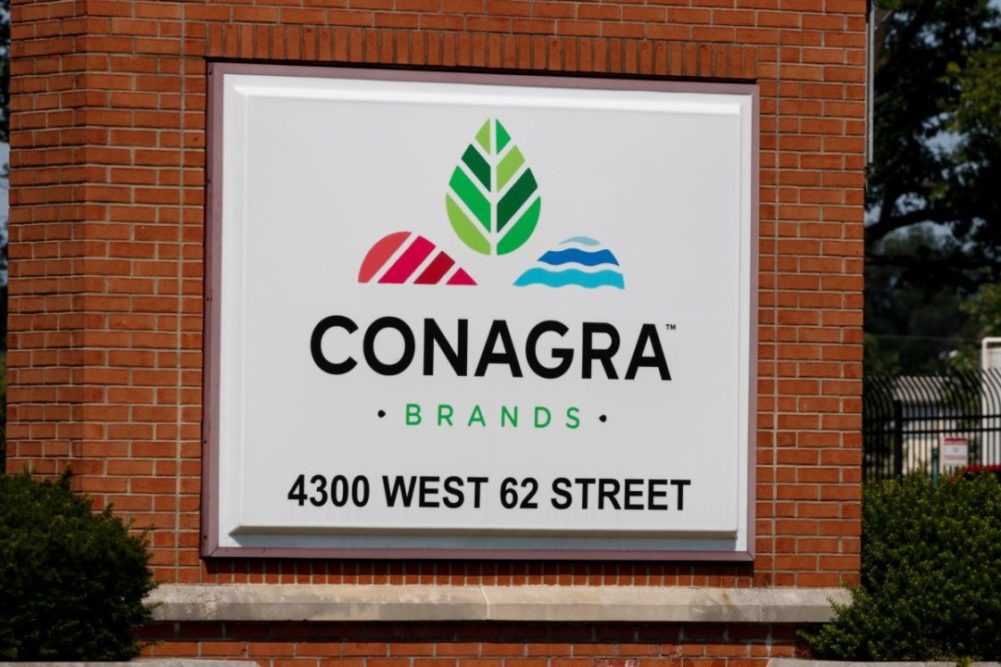CHICAGO – When asked to identify the top risks facing Conagra Brands, Inc., both David S. Marberger, chief financial officer, and Sean M. Connolly, president and chief executive officer, said the same thing — inflation, most notably the waves of inflation that have occurred the past few years.
During an April 7 conference call with securities analysts, Marberger said Conagra Brands had forecasted fiscal 2022 fourth-quarter inflation to be approximately 11%. It now is expected to be approximately 16%.
Costs pressuring the company the most are coming from transportation, dairy and meat.
“For a bit more perspective on cost, our total meat-based protein spend in fiscal '21 approximated $675 million,” Marberger said. “For fiscal ‘22, we now estimate total meat-based protein market inflation of approximately 50%, which is approximately $340 million of additional market cost, in this one commodity area (and) driving nearly 40% of our total gross materials inflation in fiscal ‘22.”
Connolly said that with successive waves of inflation comes successive pricing actions and each action carries a certain amount of risk that consumers will buy a less expensive comparable product or leave the category entirely.
“We don’t see anything that is indicating that’s the case,” he said.
He added that Conagra’s position in the market means it may continue to benefit from current market conditions.
“When people are in the tough kind of negative outlook environment and they’re looking to cut costs, they tend to switch out of the highest ticket items first,” Connolly said. “And that means we expect to continue to source a lot of our growth, as we have been, from people electing to eat in home instead of out of home. And that is one of the things that is favorably impacting our elasticities.”
For the third quarter, Conagra Brands’ net income fell 22% to $218 million, equal to 45¢ per share on the common stock, when compared with the third quarter of fiscal 2021.
Quarterly sales rose 5% to $2.9 billion.
“The strength of our top line can be measured both in the absolute and relative to peers as we gained share in key categories on a one- and two-year basis,” Connolly said. “And it’s important to note that in response to inflation-driven pricing that has been executed in the market to date, elasticities have been favorable to historical patterns, even more so than what we expected.”
Also benefiting Conagra Brands during the quarter was its investment in Ardent Mills, Denver.
“Given the nature of Ardent’s business, it can benefit from volatile market conditions,” Marberger said.
Pressuring Conagra Brands’ performance during the quarter were investments made to meet service orders and ensure availability of products.
“While these strategic investments contributed to margin compression in Q3, we believe making them was the right decision as we position Conagra for the long term,” Connolly said.
The company updated its fiscal 2022 guidance, forecasting organic net sales growth will be 4%, up from the previously guided 3%, gross inflation is expected to be 16% versus the prior guidance of 14%, and adjusted earnings per share for the year is expected to be $2.35, down from $2.50.
“As we look to the remainder of the fiscal year, the environment isn’t getting much easier in the near term,” Connolly said. “We now expect an additional $100 million of market inflation in Q4. The updated Q4 inflation forecast equates to a 26% increase versus two years ago.
“This higher-than-expected inflation is disproportionately impacting some of our strongest businesses, including meat snacks and frozen. Keep in mind that these businesses rely on inputs like protein and dairy, which are harder to offset in the short term and that frozen requires more specialized temperature-controlled transportation.”
The company plans to raise prices during the first quarter of fiscal 2023. The increases will be targeted at frozen food and protein snacks, according to the company.

